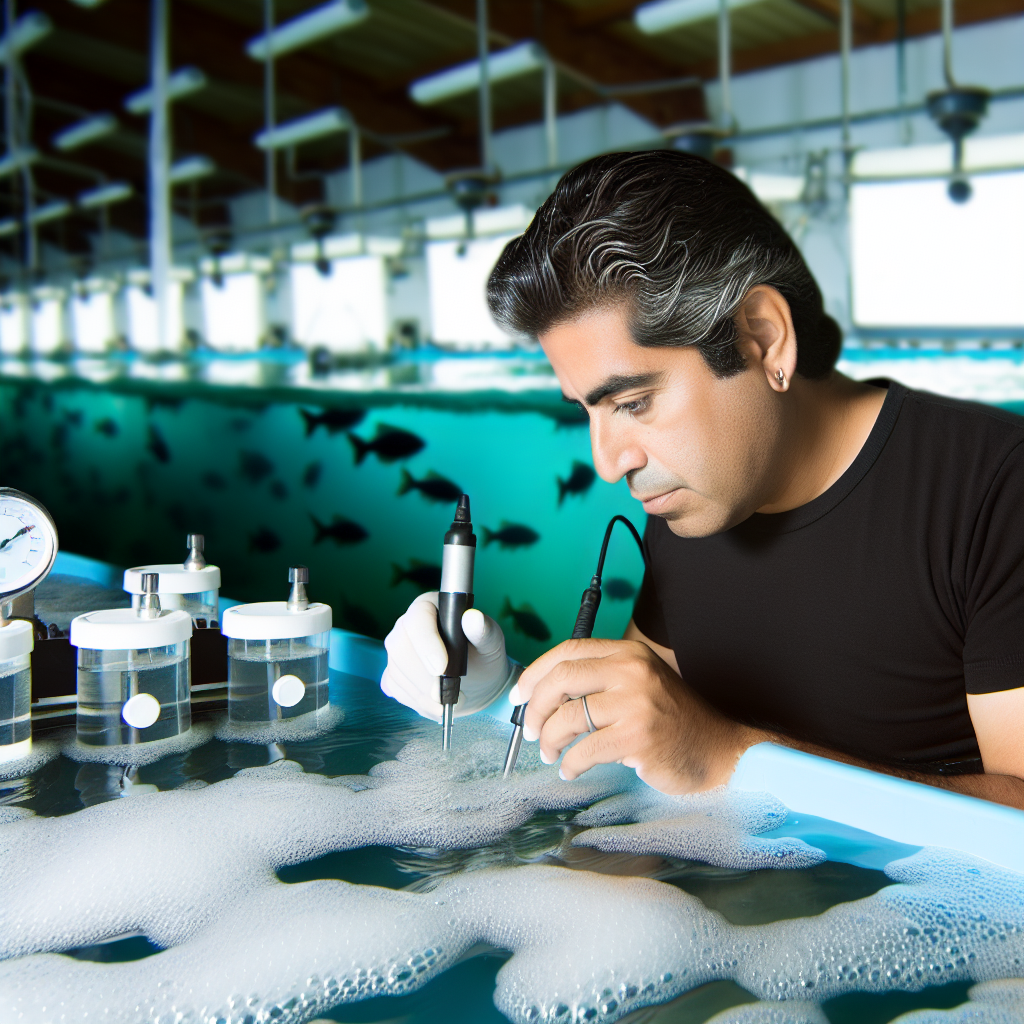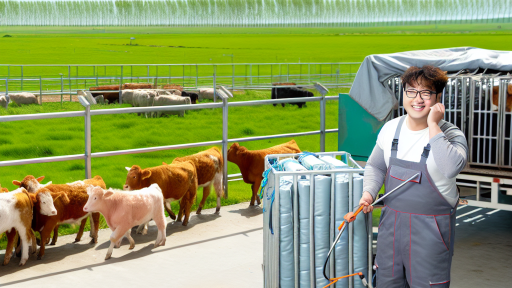Understanding the Importance of Water Quality in Fish Farming
The Role of Water Quality
Water quality directly influences fish health and growth.
Poor water conditions lead to stress and disease in fish populations.
Healthy water supports their immune systems and promotes growth.
Moreover, it enhances the overall sustainability of fish farming operations.
Key Parameters Affecting Water Quality
Multiple parameters define water quality in fish farming.
Temperature directly affects fish metabolism and behavior.
Dissolved oxygen levels are crucial for fish survival and growth.
pH levels influence nutrient availability in the water.
Ammonia and nitrite concentrations must be monitored closely.
Higher concentrations are toxic to fish and can cause fatalities.
Impact on Fish Health
High water quality leads to robust fish health.
Healthy fish show better growth rates and reproduction success.
On the other hand, poor water quality can lead to disease outbreaks.
Common ailments include gill disease and fin rot.
Maintaining water quality minimizes the risk of these health issues.
Transform Your Agribusiness
Unlock your farm's potential with expert advice tailored to your needs. Get actionable steps that drive real results.
Get StartedEconomic Benefits of Maintaining Water Quality
Investing in water quality measures saves money in the long run.
Healthy fish reduce the need for medical treatments and interventions.
Furthermore, improved growth rates enhance productivity.
Ultimately, high water quality leads to better market prices for fish products.
Key Parameters Influencing Water Quality
pH Levels
The pH level of water is critical for fish health.
Most fish thrive in a pH range of 6.5 to 8.5.
Monitoring pH regularly ensures optimal conditions.
Fluctuations outside this range can stress fish.
Consequently, regular testing will prevent issues.
Adjusting pH can be done using buffer solutions.
Maintaining stable pH is more beneficial than frequent adjustments.
Dissolved Oxygen
Dissolved oxygen is vital for fish respiration.
Fish require a minimum level of 5 mg/L of oxygen.
Adequate aeration is essential in fish farming.
Water temperature influences oxygen solubility.
Higher temperatures decrease the amount of dissolved oxygen.
Implementing aeration systems can improve oxygen levels.
Regular monitoring helps maintain sufficient oxygen concentrations.
Ammonia Levels
Ammonia is a toxic substance in aquaculture environments.
High ammonia levels can cause fish stress or mortality.
Regular water testing is crucial to detect ammonia levels.
The safe range is generally below 0.1 mg/L.
Cycling systems can help convert ammonia into less harmful substances.
Utilizing biological filters can effectively manage ammonia levels.
Showcase Your Farming Business
Publish your professional farming services profile on our blog for a one-time fee of $200 and reach a dedicated audience of farmers and agribusiness owners.
Publish Your ProfileProper feeding practices reduce excess waste contributing to ammonia buildup.
Methods for Monitoring Water Quality
Importance of Water Quality Monitoring
Water quality monitoring plays a crucial role in fish farming.
It ensures a healthy environment for aquatic life.
This practice helps prevent diseases and promotes fish growth.
Moreover, it aids in maintaining the overall ecosystem balance.
Essential Parameters to Monitor
Several key parameters are vital to track in aquaculture systems.
- pH levels indicate acidity or alkalinity in the water.
- Temperature affects fish metabolism and activity.
- Dissolved oxygen is crucial for fish survival and health.
- Ammonia and nitrite levels are toxic to fish at high concentrations.
Tools for Effective Monitoring
Utilizing the right tools enhances water quality assessment.
Digital Testers
Digital testers provide precise readings of various parameters.
These devices often come with user-friendly interfaces.
Data Loggers
Data loggers automate the process of water quality monitoring.
They store information over time for detailed analysis.
Additionally, they can alert farmers to any critical changes.
Online Monitoring Systems
Online monitoring systems offer real-time data access.
These systems provide valuable insights from remote locations.
With constant updates, farmers can react promptly to issues.
Technologies for Advanced Monitoring
Advancements in technology significantly enhance monitoring efforts.
IoT Devices
Internet of Things (IoT) devices connect various monitoring tools.
These devices allow for real-time data collection and analysis.
Automated Sensors
Automated sensors continuously measure key water parameters.
They supply immediate feedback, allowing for quick interventions.
Analyzing Water Quality Data
Data analysis is critical for effective decision-making.
Using software tools helps visualize trends and anomalies.
Moreover, it assists in identifying patterns in water quality.
Farmers can adjust practices based on this information.
Regular Maintenance and Calibration
Routine maintenance and calibration of tools are essential.
This ensures accuracy in monitoring equipment readings.
Additionally, regular checks enhance the longevity of devices.
Discover More: Ensuring Animal Welfare During Transportation
Biological Filtration Systems: Enhancing Water Purity Naturally
The Role of Biological Filtration
Biological filtration is essential in fish farming environments.
It naturally purifies water by utilizing beneficial microorganisms.
These microorganisms break down harmful substances effectively.
Consequently, they maintain a healthier habitat for fish.
Key Components of Biological Filters
Many systems contain several key components for optimal performance.
Filter media provide a surface area for bacteria to thrive.
Common types of media include sponge, foam, and ceramic materials.
Each type has unique properties that benefit the filtration process.
Types of Filter Media
- Sponge materials allow for good oxygen flow.
- Ceramic media offer high surface area for bacteria colonization.
- Foam filters can trap larger particles effectively.
Benefits of Biological Filtration
Implementing biological filtration provides numerous advantages.
It significantly reduces ammonia and nitrite levels in water.
As a result, fish experience less stress and improved health.
Moreover, it contributes to better overall water quality.
Showcase Your Farming Business
Publish your professional farming services profile on our blog for a one-time fee of $200 and reach a dedicated audience of farmers and agribusiness owners.
Publish Your ProfileChallenges and Maintenance
Despite its benefits, biological filtration requires regular maintenance.
Operators must monitor the system to ensure efficiency.
Clogged filter media can hinder the filtration process.
Cleaning and replacing media regularly keeps systems running smoothly.
Monitoring Water Parameters
Regular testing of water parameters is essential for success.
Key indicators include pH, ammonia, nitrite, and nitrate levels.
These tests help in adjusting filtration systems as necessary.
By staying proactive, fish farmers can optimize water quality.
Learn More: Insulation Techniques For Livestock Facilities
Chemical Treatments for Improving Water Quality
Introduction to Chemical Treatments
Chemical treatments play a vital role in fish farming environments.
They help maintain optimal water quality for aquatic life.
Understanding the benefits and risks associated with these treatments is essential.
Types of Chemical Treatments
There are several common chemical treatments used in aquaculture.
- Water conditioners enhance water quality by neutralizing harmful substances.
- Antimicrobial agents help control disease outbreaks in fish populations.
- Nutrient supplements foster healthier and faster fish growth.
Benefits of Chemical Treatments
Chemical treatments provide numerous advantages when used properly.
Firstly, they can significantly reduce the levels of harmful pathogens in the water.
This reduction promotes healthier fish and minimizes mortality rates.
Secondly, improved water quality boosts the overall productivity of fish farming.
Healthy water quality increases feed efficiency and growth rates.
Risks Associated with Chemical Treatments
Despite their benefits, chemical treatments carry certain risks.
Overuse of chemicals can lead to toxic buildup in the environment.
This toxicity can harm both fish and the broader ecosystem.
Additionally, some treatments may adversely affect beneficial bacteria populations.
This balance is crucial for maintaining a healthy aquaculture system.
Best Practices for Chemical Usage
To maximize benefits and minimize risks, apply best practices when using chemicals.
- Regularly monitor water quality parameters such as pH and ammonia levels.
- Use chemicals at recommended doses to prevent overdosing.
- Employ a holistic management approach that includes regular water changes.
By following these practices, fish farmers can optimize water quality effectively.
Delve into the Subject: Integrating Exotic Livestock into Your Farm System
Best Practices for Water Recirculation in Fish Farms
Understanding Water Recirculation
Water recirculation refers to the practice of reusing water in aquaculture systems.
This method improves water quality in fish farming environments.
By continuously filtering and treating the water, farms can minimize waste.
Effective water recirculation supports healthier fish populations.
Choosing Appropriate Equipment
Investing in high-quality pumps and filters is essential.
These components will ensure a reliable recirculation system.
For instance, biofilters help break down harmful waste products.
Additionally, ultraviolet sterilizers can eliminate pathogens.
Monitoring Water Quality
Regularly testing water parameters is crucial for success.
Focus on ammonia, nitrite, nitrate, and pH levels.
These factors significantly influence fish health and growth.
Utilizing automated monitoring systems can streamline this process.
Implementing Proper Maintenance Routines
Establish routine maintenance for all equipment.
This practice ensures optimal performance over time.
Showcase Your Farming Business
Publish your professional farming services profile on our blog for a one-time fee of $200 and reach a dedicated audience of farmers and agribusiness owners.
Publish Your ProfileMoreover, regularly cleaning filters will enhance efficiency.
Documenting maintenance schedules helps track performance trends.
Emphasizing Biosecurity Measures
Incorporating biosecurity protocols minimizes disease risks.
These measures prevent contamination in recirculating systems.
Regularly sanitizing equipment and tanks is essential.
Furthermore, monitoring incoming fish stock is critical.
Integrating Additional Filtration Systems
Consider integrating supplementary filtering methods.
Activated carbon filters can remove chlorine and odors.
Mechanical filters capture solid waste effectively.
Using a combination increases overall water quality.
Training Staff on Best Practices
Well-trained staff perform better in managing recirculation systems.
Provide comprehensive training on water quality management.
Encourage ongoing education regarding new technologies.
Empowered employees contribute significantly to success.
Gain More Insights: Essential Breeding Strategies for Livestock Farmers

Impact of Water Temperature on Fish Health and Growth Rates
Importance of Water Temperature
Water temperature significantly influences fish health and growth rates.
Each fish species has an ideal temperature range for optimal growth.
Consistently maintaining this range supports healthy aquatic ecosystems.
Effects on Metabolism
Temperature impacts the metabolic rate of fish directly.
Warmer water boosts metabolism, leading to increased feeding activity.
Conversely, cooler water slows metabolism and reduces appetite.
An appropriate temperature promotes efficient energy use in fish.
Growth Rates
Growth rates vary significantly depending on water temperature.
Research shows optimal temperatures enhance growth potential.
Poor temperature management can stunt growth and delay development.
Health Risks Associated with Temperature Variations
Extreme temperatures can lead to stress in fish populations.
Stress weakens fish immune systems, making them susceptible to disease.
Consistent monitoring helps prevent adverse temperature fluctuations.
Managing Water Temperature
Effective temperature management is crucial in fish farming.
Using heaters and chillers helps maintain optimal water temperatures.
Regular water quality testing ensures stability in farming environments.
Importance of Temperature Management for Healthy Fish
Ultimately, understanding and managing water temperature is vital for success.
Healthy fish lead to better yields and sustainable farming practices.
Strategies for Managing Algal Blooms: Prevention and Control
Understanding Algal Blooms
Algal blooms can significantly affect fish farming environments.
They reduce water quality and disrupt the aquatic ecosystem.
Moreover, harmful algal species can produce toxins.
Preventing Algal Blooms
Prevention is essential to protect fish farming operations.
Managing nutrient levels in water is a key strategy.
Reduce phosphorus and nitrogen inputs from fertilizers.
Regularly test water quality to ensure optimal conditions.
Showcase Your Farming Business
Publish your professional farming services profile on our blog for a one-time fee of $200 and reach a dedicated audience of farmers and agribusiness owners.
Publish Your ProfileImplementing proper waste management practices also helps.
Controlling Existing Blooms
When algal blooms occur, immediate action is necessary.
Introduce beneficial microorganisms to compete with harmful algae.
Monitoring water clarity can indicate bloom status.
Utilize mechanical methods to remove excess algae where feasible.
Consider using environmentally friendly algaecides as a last resort.
Community Engagement and Education
Educating local fish farmers can enhance prevention efforts.
Workshops can provide valuable knowledge about best practices.
Encourage collaboration between fish farmers for shared solutions.
Community awareness is crucial in managing water ecosystems.
Regulatory Standards for Water Quality in Aquaculture
Understanding Regulatory Standards
Regulatory standards establish minimum requirements for water quality in aquaculture.
These standards protect fish health and promote sustainable farming practices.
They also aim to prevent pollution and safeguard the surrounding ecosystems.
Compliance with these regulations is essential for fish farming operations.
Key Parameters for Water Quality
Several key parameters define water quality in aquaculture.
Temperature, pH, dissolved oxygen, and ammonia levels are critical factors.
Each species of fish may have specific requirements for these parameters.
Regular monitoring helps maintain these within acceptable limits.
Temperature Control
Temperature significantly impacts fish metabolism and growth rates.
Each species thrives within a specific temperature range.
Farmers must ensure that temperatures are regularly monitored.
Adjustments can be made through heating or cooling systems.
pH Levels
The pH level indicates the acidity or alkalinity of water.
Most fish species prefer a pH between 6.5 and 9.0.
Rapid fluctuations can cause stress to fish populations.
Regular pH testing allows for timely interventions.
Dissolved Oxygen
Dissolved oxygen is vital for fish respiration.
Adequate levels are usually above 5 mg/L for optimal health.
Low oxygen levels can lead to fish suffocation and death.
Water aeration techniques can enhance oxygen levels effectively.
Ammonia and Nitrite Levels
Ammonia and nitrite are toxic to fish in elevated concentrations.
Regular testing helps prevent harmful buildups in the aquaculture environment.
Nitrogen cycling processes help to manage these compounds sustainably.
Compliance and Its Implications
Ensuring compliance with water quality regulations is mandatory.
Non-compliance can lead to fines and operational restrictions.
It can also damage the reputation of fish farming operations.
Consumers increasingly demand responsibly farmed fish products.
Adoption of Best Practices
Farmers can adopt best practices to maintain compliance.
Regular training and updates on regulations are beneficial.
Efficient record-keeping helps demonstrate compliance during inspections.
Showcase Your Farming Business
Publish your professional farming services profile on our blog for a one-time fee of $200 and reach a dedicated audience of farmers and agribusiness owners.
Publish Your ProfileActive engagement with regulatory agencies fosters positive relationships.
Impact on Market Access
Compliance with water quality standards expands market access.
Retailers and restaurants prefer suppliers who meet quality standards.
Farmers who comply can charge premium prices for their products.
This enhances overall profitability and market competitiveness.




